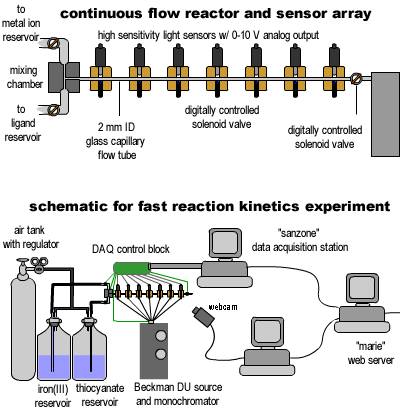| 1. | Introduction | 2. | Method | 3. | References |
![]()
The Internet Chemistry Set: Web-based Remote Laboratories for Distance
Education in Chemistry
Frederick A. Senese, Frostburg State University
Christopher Bender, Frostburg State University
Jennifer Kile, Frostburg State University
Abstract
The convergence
of modern data acquisition technologies with the Web's interactivity,
connectivity and multimedia capabilities presents an exceptional opportunity
for distance education in the physical sciences. Web-mediated access and
control of laboratory equipment can improve utilization of expensive and
specialized instruments, facilitate collaborative data sharing and analysis,
and provide essential practical experience in physical science courses
delivered at a distance.
This paper describes a remotely controlled experiment for determining the rates of fast chemical reactions. The experiment is not a simulation; it involves actual equipment controlled in real time from remote locations on the Web. The experiment is the first in a series designed to provide a pedagogically sound on-line laboratory experience for Web-delivered general chemistry courses. Students use the experiment's Web interface to collect data, to obtain interactive technical support and background information, and to display and analyze results. Each experiment is designed to encourage sharing of data and collaboration with users at other institutions, providing students with a valuable first look at work in a distributed laboratory environment.
![]()


